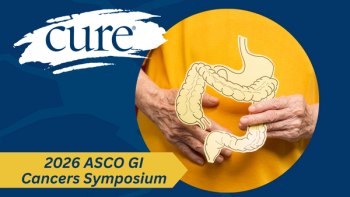
FDA Approves Onivyde as First-Line Treatment of Metastatic Pancreatic Cancer
The Food and Drug Administration has approved Onivyde with oxaliplatin, fluorouracil and leucovorin, for the first-line treatment of patients with metastatic pancreatic adenocarcinoma, the agency has announced.
The Food and Drug Administration (FDA) has approved Onivyde (irinotecan liposome) with oxaliplatin, fluorouracil and leucovorin, for the first-line treatment of patients with metastatic pancreatic adenocarcinoma, the agency has announced.
The approval was based on
“We are pleased that the FDA has approved the NALIRIFOX regimen. For a tough disease with few treatment options, this is significant news for people with metastatic pancreatic ductal adenocarcinoma given it has been more than 10 years since there has been a PDAC-specific approval in the first-line setting,” said Julie Fleshman, president and CEO of Pancreatic Cancer Action Network in a news release issued by the organization.
Patients experienced what the FDA described as “a statistically significant improvement” in both overall survival (OS; the time following treatment that a patient lives regardless of disease status) and progression-free survival (PFS; the time a patient lives without their disease spreading or worsening) with NALIRIFOX versus Gem+NabP, with median OS of 11.1 months and 9.2 months, respectively, and median PFS of 7.4 months and 5.6 months, respectively. The objective response rates (patients whose disease responded partially or completely to treatment) were 41.8% and 36.2%, respectively.
Explaining the mechanics of the liposomal treatment, medical oncologist Dr. Anthony Shields of the Karmanos Cancer Center in Detroit noted that, “basically, the drug is hidden in these really small, 100-nanometer, lipid droplets, and then it's injected into the body and finds its way to the tumor. The advantage over standard irinotecan is that in how it's made that way, the blood vessels in tumors are abnormal and these little lipid nanoparticles tend to get trapped in the tumors, and so you get higher exposure to the tumor, and less exposure to the rest of the body. So, it helps and it is sort of a slow-release form of it as well, because it takes a while for it to sort of get uncoated and get into tumors.”
In NAPOLI 3, the safety profile of NALIRIFOX “was consistent with the profiles of the treatment components,” the biopharmaceutical company Ipsen previously reported, noting that the most common grade 3 and 4 (moderate to severe) treatment-emergent side effects with more than 10% frequency among patients in the NALIRIFOX group compared with those in the nab-paclitaxel and gemcitabine group included diarrhea (20.3% vs 4.5%), nausea (11.9% vs 2.6%), hypokalemia (low levels of potassium, 15.1% vs 4.0%), anemia (10.5% vs 17.4%) and neutropenia (low levels of white blood cells, 14.1% vs 24.5%).
“In our patients with advanced disease, this is not a curative therapy at this point,” Shields said. “It clearly improves survival. It's still got its share of toxicities, though. … We need better drugs, despite the improvements. If patients get this regimen is the first line, inevitably if they're doing OK we will give gemcitabine/nab-paclitaxel (combination) as the second-line regimen. But we really don't have a third line regimen.”
For more news on cancer updates, research and education, don’t forget to




